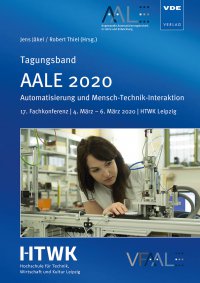A practical CBM model for industrial vapor compression refrigeration systems
Conference: AALE 2020 - 17. Fachkonferenz, Automatisierung und Mensch-Technik-Interaktion
03/04/2020 - 03/06/2020 at Leipzig, Deutschland
Proceedings: AALE 2020
Pages: 10Language: englishTyp: PDF
Authors:
van de Sand, Ron; Reiff-Stephan, Jörg (Technische Hochschule Wildau, Germany)
Corasaniti, Sandra (University of Rome “Tor Vergata”, Italy)
Abstract:
Vapor compression refrigeration systems (VCRS) are an integral part of many industrial processes and are in the centre of process reliability and system availability considerations. These systems belong to the most important subsystems within the refrigeration cycle, which is why early fault detection and diagnosis can contribute to reducing unscheduled system downtimes by increasing the overall system availability. Moreover, through the application of Condition- Based Maintenance (CBM) techniques, maintenance actions can be scheduled based on the actual system condition rather than predetermined time intervals and, thus, lead to lower operating costs. Generally, the fault diagnosis part within a CBM model can be either model-based or data-driven, of which the latter is considered to be more cost-effective as it applies self-adapting algorithms that require less domain knowledge. In this work, a data-driven state-of-the-art CBM model is derived from the current literature and evaluated by use of two datasets stemming from the studies described in [R. van de Sand, C. Falk, S. Corasanti, and J. Reiff-Stephan, “A data-driven fault diagnosis approach towards oil retention in vapour compression refrigeration systems,” in 2019 International IEEE Conference and Workshop in Óbuda on Electrical and Power Engineering (CANDO-EPE)] and the ASHRAE RP-1043 project conducted by Comstock et al.. In essence, the model is a compound of an offline training and an online application phase. The offline training addresses measures for data pre-processing, feature extraction, hyperparameter optimization, and model training. The online application phase, however, focusses on the model application comprising data filtering, steadystate detection, fault detection (FD) and fault isolation (FI) techniques. It is worth noticing that the work at hand deploys the One-Class Support Vector Machine (OC-SVM) for the automatic fault detection and diagnosis phase, which bounds data belonging to a single class in high dimensions. A major advantage can be found in the robustness of the OC-SVM in comparison to the common multiclass classification of the Support Vector Machine (SVM) since observations without class affiliation are consequently not classified. Subsequently, this work summarizes the results and discusses the transferability of the model to heterogeneous refrigeration systems. After this introduction, section 2 outlines the related work in this field of research and is followed by the model description. In section 4, the model is validated and the results are discussed in more detail. Finally, the work at hand is summarized and an outlook on future work is presented in section 5.


